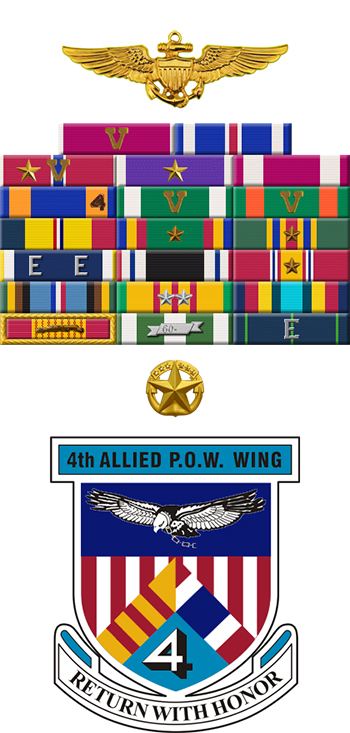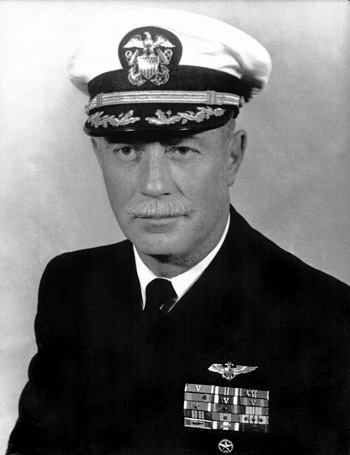
|
Brian D. Woods |
 |
|||
| Rank, Service | ||||
Captain O-6, U.S. Navy |
||||
| Veteran of: | ||||
|
||||
| Tribute: | ||||
Brian Woods was born on March 23, 1932, in Coco Solo, Panama. He enlisted in the U.S. Naval Reserve on May 13, 1950, and served on active duty as an Aviation Ordnanceman with VS-661 from July 18, 1951 to June 29, 1952, with part of this service at the U.S. Naval Academy Prep School at Bainbridge, Maryland. Woods entered the U.S. Naval Academy in June 1952, left the academy in March 1953, and then attended the University of California at Los Angeles from March 1953 to December 1955. He entered the Aviation Cadet Program of the U.S. Navy in December 1955, and was commissioned an Ensign and designated a Naval Aviator on February 2, 1957. Woods served at NAS Patuxent River, Maryland, from 1957 to 1959, and then attended F9F-8 Cougar Fleet Replacement Training at NAS Miramar, California, before serving as an FJ-4B Fury pilot with VA-146 at NAS Miramar and aboard the aircraft carriers USS Lexington (CV-16) and USS Oriskany (CV-34) from 1960 to 1962. LT Woods served as an instructor pilot with VT-9 at NAS Meridian, Mississippi, from 1962 to May 1965, and then attended Carrier Air Traffic Control Center Training at NAS Glynco, Georgia, from May to July 1965. He served as assistant air operations officer aboard the aircraft carrier USS Midway (CVA-41) from July 1965 to June 1966, and then as air operations officer aboard the aircraft carrier USS Yorktown (CVS-10) from July 1966 to March 1967. LCDR Woods next attended A-7 Corsair II Replacement Air Group Training with VA-122 at NAS Lemoore, California, before serving as an A-7 pilot with VA-97 aboard the aircraft carrier USS Constellation (CV-64) from June 1967 until he was forced to eject over North Vietnam and was taken as a Prisoner of War on September 18, 1968. After spending 1,609 days in captivity, CDR Woods was released during Operation Homecoming on February 12, 1973. He was briefly hospitalized at the Naval Hospital in San Diego, California, before attending refresher flight training and then Replacement Air Group Training at NAS Lemoore, in the A-4 Skyhawk and the A-7. CDR Woods served as commanding officer of VA-195 aboard the aircraft carrier USS Kitty Hawk (CV-63) from May 1974 to June 1975, and then attended Naval War College at Newport, Rhode Island, from July 1975 to July 1976. His next assignment was as air operations officer aboard the aircraft carrier USS Ranger (CV-61) from September 1976 to February 1977, and then as operations officer aboard the aircraft carrier USS Midway (CV-41) from March 1977 to May 1978. Capt Woods served on the faculty staff of the Naval War College from June 1978 to January 1979, followed by service as commanding officer of the fleet oiler USS Ashtabula (AO-51) from July 1979 to January 1981. His next assignment was as Tomahawk Cruise Missile Branch Chief for the Commander-in-Chief, Pacific Fleet, from January to June 1981, and then as Head of the Carrier Acquisition Programs Coordination Branch on the Staff of the Deputy Chief of Naval Operations for Air Warfare at the Pentagon from July 1981 until his retirement from the Navy on October 31, 1983. Brian Woods Flew West on September 16, 2015, and was buried at Fort Rosecrans National Cemetery in San Diego, California. |
||||
|
||||

